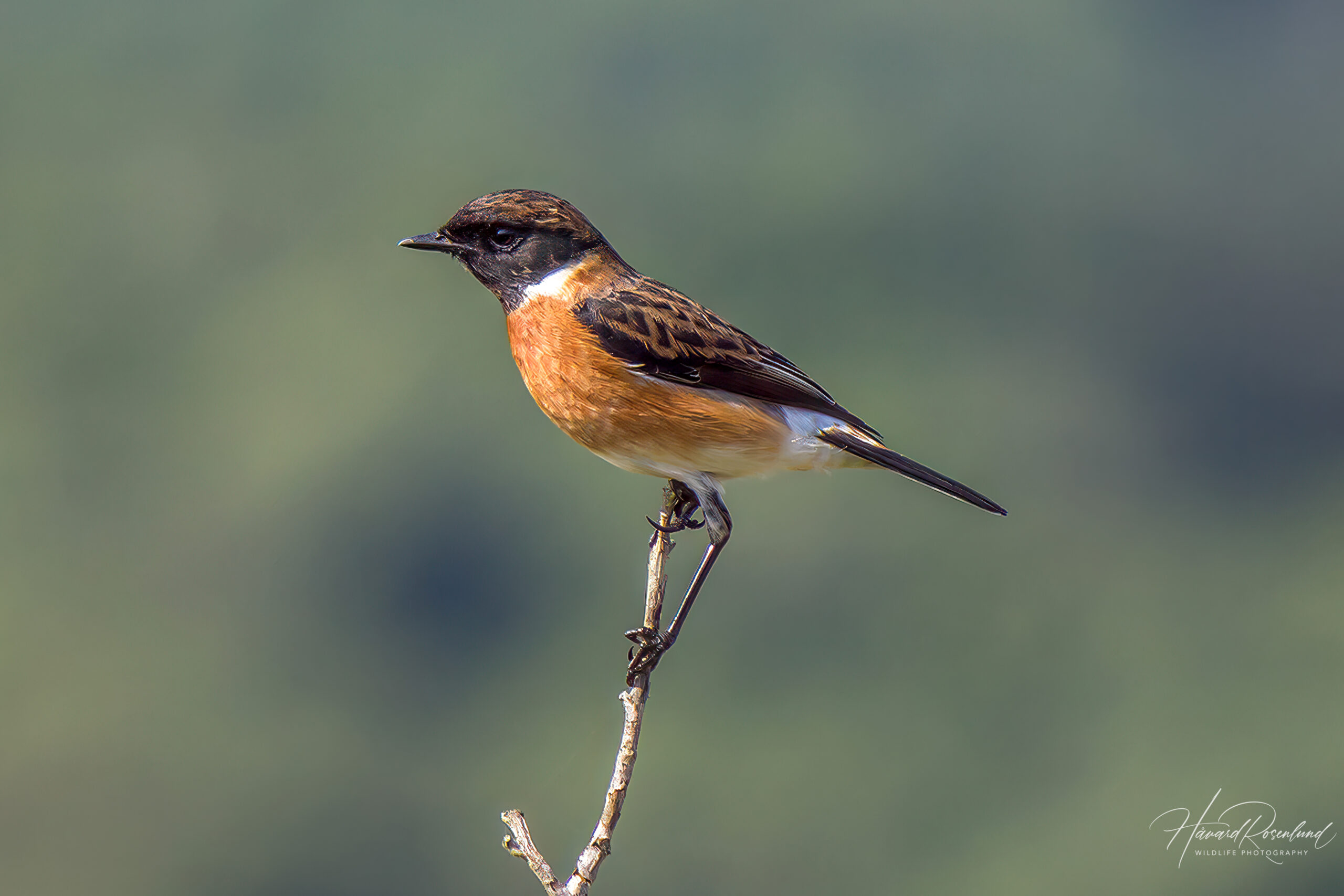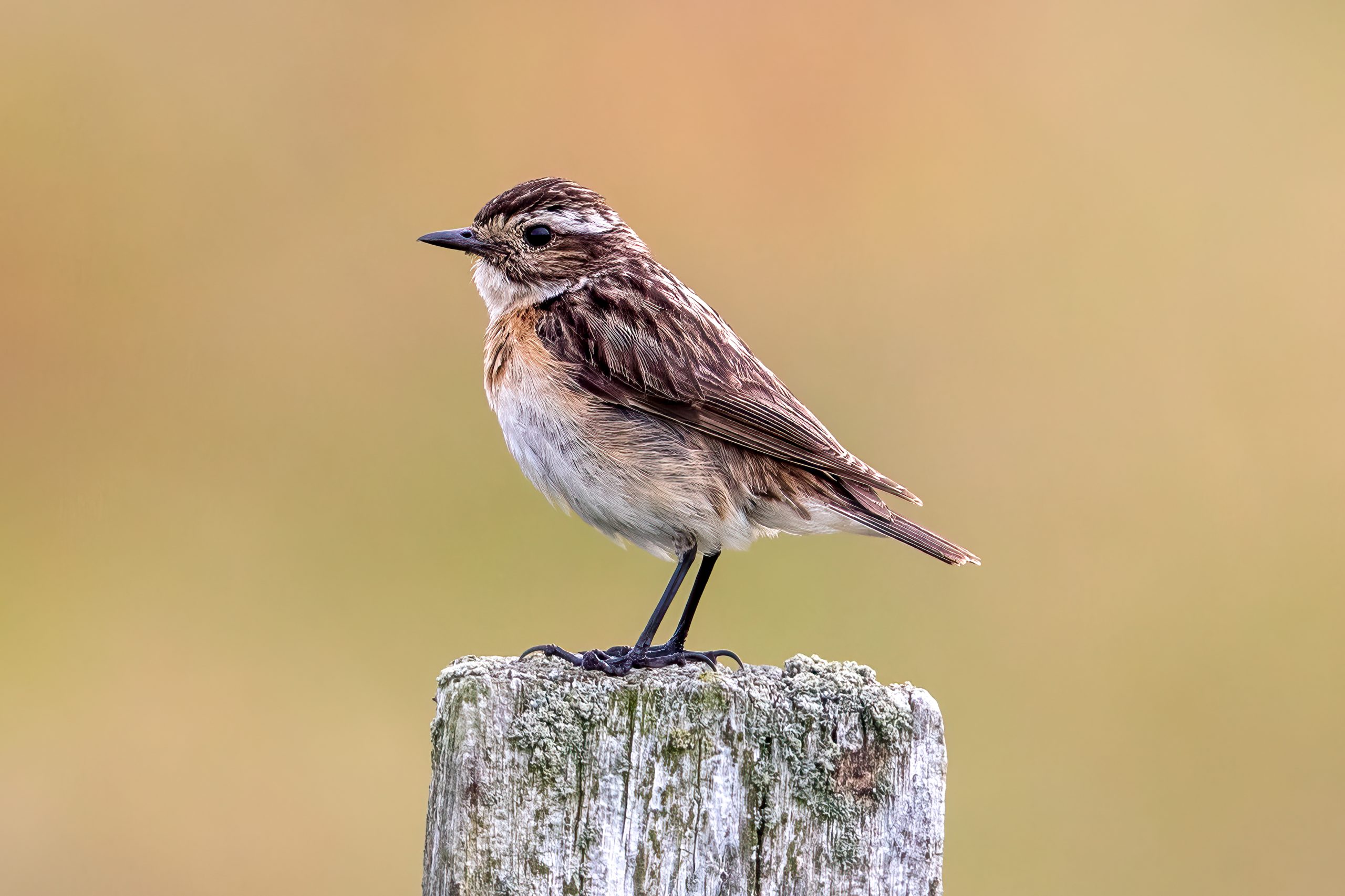African Stonechat
(Saxicola torquatus)
Description
The African stonechat (Saxicola torquatus) is a small, perching bird distinguished by its striking appearance and distinctive call. It is found across sub-Saharan Africa and parts of the Arabian Peninsula. This species exhibits sexual dimorphism, with males showcasing a black head, white around the neck, and an orange-red breast that gradually turns white towards the belly. Females are generally browner with less vivid underparts. The amount of orange on the breast differs between subspecies, and some lack the orange coloration entirely. The African stonechat differs from similar species, like the European stonechat (Saxicola rubicola), by its slightly larger size and different vocalizations.
The African stonechat was previously considered the same species as the European stonechat, and, together with a few other stonechat species, was referred to as the common stonechat. Recent studies on the genetics and the vocalizations of these species showed them to be separate, and they are now regarded as different species.
Diet & habitat
The African stonechat thrives in a variety of habitats, including open grasslands, shrubby areas, and is often found near human settlements. It is an adaptable bird that feeds primarily on insects, such as beetles and flies. It employs a unique ‘perch and pounce’ technique for feeding, often seen perched on top of vegetation, from where it launches to catch its prey in the air or on the ground.
Nesting
The breeding season of the African stonechat varies by region but generally occurs during the wetter parts of the year. During courtship, the male performs a fluttering display flight to attract the female, accompanied by a melodious song. Both sexes participate in nesting behaviors, and nests are typically built close to the ground in dense vegetation. The female lays 2-4 eggs, and both parents share incubation duties, lasting about two weeks. Fledglings leave the nest within a fortnight but continue to receive parental care for several weeks thereafter.
Status
The African stonechat benefits from a wide range and a large, stable population. However, habitat loss and changes due to agricultural practices are potential threats that could impact some local populations. It has not yet been split from the other stonechat species by the IUCN, which lists them together as the common stonechat. It is then classified as least concern.






